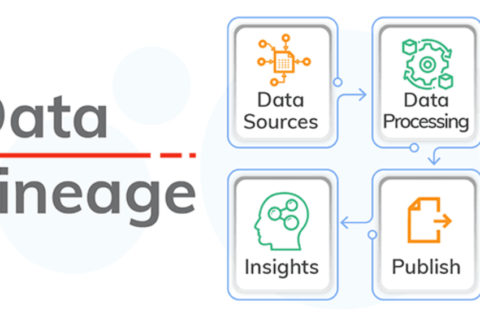Overview
Kubernetes management is complex, and many companies realize they should focus their efforts elsewhere. They will face unresolved engineering issues if they outsource many container orchestration activities to managed service providers. Amazon Elastic Kubernetes Service (EKS), Azure Kubernetes Service (AKS), and Google Kubernetes Engine (GKE) are currently the most common managed Kubernetes options (also known as Kubernetes as a service (KaaS)). Cloud providers have tried to strike the right balance between allowing customers to control and merge the features they want while abstracting the complicated autoscaling, upgrade, setup, and cluster management tasks. Many organizations believe that managing their Kubernetes clusters is taxing and non-differentiating work. This is becoming increasingly futile as those run companies mature.
Cloud vendors have been attempting to strike the right balance between allowing customers to monitor and integrate what they want. This comes while abstracting difficult autoscaling, updates, configuration, and cluster management activities. Many companies have discovered that maintaining their Kubernetes clusters has become increasingly burdensome and undifferentiated as these managed services have matured.
What changed with the Kubernetes management services?
Stephen O’Grady sees a similar pattern playing out now with Kubernetes as it did previously with databases and CRM, where no administrator will hand over their crown jewels to a controlled provider. When businesses consider a strategic initiative, their first instinct is to run it themselves. Then, as they acclimate, they realize that not only is it not providing them with any competitive advantage, but it also costs them money. It’s more than likely that the suppliers will be able to run it better than they do.
According to the latest CNCF Cloud Native survey, 26% of respondents use a managed Kubernetes service, up from 23% a year ago and quickly catching up to on-premises installations, which are at 31%. Since these respondents are CNCF participants, the number may be skewed against self-managing organizations that have experimented with their Kubernetes clusters in the past. As a result, the precise use of controlled Kubernetes could be higher than the CNCF survey indicates.
To have that in-house knowledge, you need an expert team that is in touch with upstream Kubernetes, the CNCF, and the entire ecosystem. You can’t just depend on a vendor; you must comprehend all the complexities. So far, the trend line for managed services maturation has been very positive.
It also comes down to selecting the appropriate tool for the job. Bloomberg also runs about 80% of its Kubernetes workloads on-premises. The company has invested heavily in building in-house expertise to efficiently handle the environment and an internal developer platform on top of it.
Why go with a Kubernetes management service?
Internal experience, stability, and actually managing containerized environments were among the most frequently mentioned Kubernetes challenges in the Flexera survey. The Flexera survey found that controlled Kubernetes is even more common among organizations with less than 1,000 employees and where cloud-native knowledge is harder to come by. AWS-controlled options are by far the most common way to handle containers, accounting for 52%, followed by self-managed Kubernetes (37%), Azure-managed (35%), and GKE-managed (23%). Control overhead and time and resource use are the primary drivers for implementing controlled Kubernetes, according to Dvoretskyi of the CNCF.
It’s obvious to avoid reinventing the wheel if they can be satisfied by a controlled service. Amadeus, a global travel technology business, uses managed Kubernetes services to simplify management. Since 2017, Amadeus has been gradually migrating to Kubernetes as its underlying infrastructure.
The main problem is the total value of possession: how much will it cost, and how many people will we need to run it in relation to our own setup? Amadeus hasn’t yet switched any workloads to a managed service. But following a new deal with Microsoft, it’s putting AKS and other managed services to the test where and when it makes sense. For the time being, that does not include core purposes. However, for tooling and applications that aren’t central to what we do, as well as for smaller, niche use cases, using anything like AKS makes sense.
As the vendors agree, the decision to use a controlled Kubernetes service boils down to confidence for many organizations. To demonstrate this, AWS recently open-sourced its EKS Distro on GitHub. The CNCF, for its part, manages the Certified Kubernetes Conformance Program. This ensures interoperability between installations regardless of the certified vendor.
Eight problems with Kubernetes Management Architecture
Kubernetes is mainly for web-scale companies:
First and foremost, the Kubernetes architecture was designed for organizations. It’s mainly for those who need to handle highly large-scale application environments, and it has always been that way. However, if you’re a smaller company with just one data center and a dozen or so applications to deploy, Kubernetes architecture might be overkill. If you use it on a large scale, the effort taken to configure and handle it is not worth the problems it solves.
Kubernetes marketplace is fractured:
Another issue with the Kubernetes architecture is that there are so many Kubernetes distributions, as well as so many tools, ideologies, and opinions associating with them, that the Kubernetes ecosystem has become highly fragmented. Cloud-based Kubernetes services suffer from a similar level of fragmentation. GKE, or Google Kubernetes Engine, differs from Amazon EKS, the AWS cloud’s counterpart, in user interface and management resources.
Kubernetes has too many pieces:
This means that you must deal with each piece separately when installing or updating Kubernetes. And the majority of Kubernetes distributions lack well-automated solutions for these tasks. Kubernetes is a complex framework that relies on a number of components to function correctly. However, compared to other complex platforms, Kubernetes does a particularly poor job of integrating its different elements into a cohesive whole that can be easily managed. A standard Linux distribution often includes many pieces of software. You can, however, install and control them all in a centralized, streamlined manner. With the Kubernetes architecture, this is not the case.
Kubernetes doesn’t guarantee high availability:
One of the most common justifications for using Kubernetes is the idea of a distributed system. They handle your apps in such a way that they guarantee never to crash, even though part of your infrastructure fails. Kubernetes’ architecture allows intelligent, automating decisions about where workloads should be placed within a cluster. Kubernetes, on the other hand, isn’t a magic bullet for high availability. They also can’t guarantee that resources are distributing evenly among the various workloads running in a cluster.
It’s hard to control Kubernetes manually:
Even though Kubernetes necessitates a significant amount of manual intervention to provide high availability. If you want to control things manually, it tends to make it very difficult. To be sure, there are ways to change the timing of Kubernetes probes that decide if a container is running correctly or force a workload to run on a specific server in a cluster. However, the Kubernetes architecture was not with the intention that administrators would make these changes manually. It assumes that you will always be satisfying with the defaults. Kubernetes was designed with web-scale deployments in mind. Kubernetes, on the other hand, does not make it easy to have more control over how workloads within your cluster are organizing if you are a smaller company.
Monitoring and performance optimization in Kubernetes is difficult:
Kubernetes aims to keep the workloads up and run as much as possible. However, the Kubernetes architecture does nothing to help you monitor workloads or ensure that they are running at their best. It doesn’t notify you when there are issues, and collecting monitoring data from a cluster isn’t particularly easy. The majority of Kubernetes delivery monitoring dashboards provide in-depth insight into your environment. There are third-party applications that provide this visibility, but they require additional setup, learning, and management if you choose to use Kubernetes.
Kubernetes reduces everything to code:
In Kubernetes, almost every job necessitates the use of code. YAML files are commonly to store this code, which must be adding to the Kubernetes command line. Many people consider the Kubernetes architecture’s necessity for everything-as-code to be a function rather than a flaw.
Kubernetes wants to be all controlling:
Kubernetes is not to work with other systems. It aspires to be the only forum for deploying and managing the apps. Kubernetes doesn’t have any built-in functionality for doing stuff like this. It’s built on the premise that everyone wants to run all the time inside containers.
Bottom Line
However, there are several flaws in the Kubernetes architecture. Overall, it’s not a good solution if you have legacy workloads to handle or if your deployments’ size isn’t big enough to warrant the difficulty that Kubernetes offers. If you have any queries or questions, then you can contact us. We will be happy to hear from you!
Do you find the blog interesting? Then please do contact our blogs too. Please browse our website to know more about us and our services.




